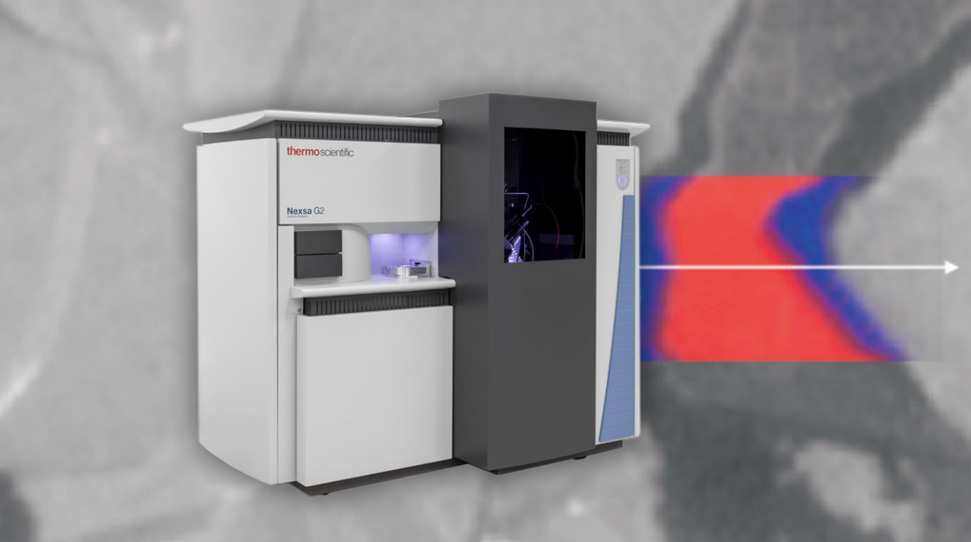High quality data from even the most challenging samples.


The Thermo Scientific Nexsa is an XPS (X-Ray Photoelectron Spectrometer) with automated surface analysis and multi-technique capabilities. There are options to integrate ISS (Ion Scattering Spectroscopy), UPS (UV Photoelectron Spectroscopy), REELS (Reflected Electron Energy Loss Spectroscopy and Raman for correlative analysis. Options for sample heating and biasing further increase the range of experiment possibilities.
High quality data from even the most challenging samples.
Unlock even more information about your sample.
For monatomic and cluster ion depth profiling.
Optional heating stage and sample biasing modules.
Understand how a sample’s chemistry changes into the bulk or examine the interface of layers with depth profiling. The Nexsa’s dual-mode source uses a high performance monatomic ion source for organic materials, and MAGCIS (Monatomic And Gas Cluster Ion Source) for other types of samples. These are configured automatically to ensure reproducibility, and greatly open up the types of samples you can analyse.
As well as the option to integrate other techniques seamlessly for correlative spectroscopy, a wide range of sample holders are available. As well as accommodating a variety of sample types, including powders and fibres, these also add new possibilities to your experiments. Rotating sample holders improve layer resolution during depth profiling. Use a tilting sample holder for angle-dependent XPS studies on ultra-thin films. Examine air-sensitive materials without exposure to the air, with a vacuum transfer module. Apply low voltages with a bias sample holder to measure work functions and performing charge/discharge studies. Examine how samples react to heating.
View our range of solutions for battery and fuel cell research, green energy, semiconductors and solar cells.
Take a look at our range for metals analysis and process control in production.
View all solutions for polymer analysis.
We offer a range of instruments for elemental and mineral analysis, mapping and imaging in geology and geoscience.